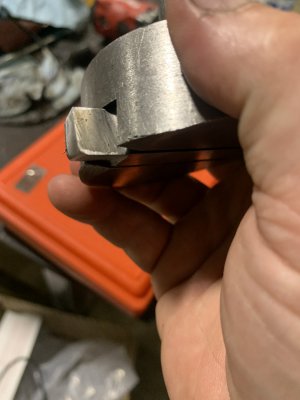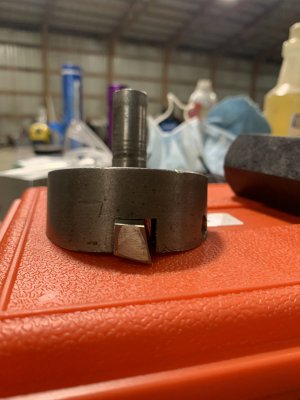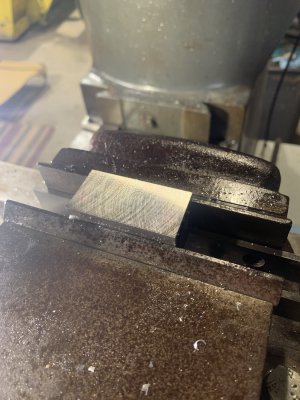- Joined
- Mar 27, 2022
- Messages
- 427
Trying to figure out why my cut is poor with this fly cutter. I ground the tool myself and honed the edge. The finish improved with more radius added to the nose of the tool but you can still feel the ridges even if you feed really slow.
My questions are about which direction the tool is supposed to be and if my grind looks okay.
On the direction, seems like I need to grind a LH tool for it as it lines up more center to the tool but then wouldn’t the set screws be on the wrong side for that?
On the grind question I’m going to guess it’s been 1/16-1/32”. I haven’t measured it. The blank is 1/2”. I honed it after grinding to get it nice and sharp. I’m using a 15 degree rake and about 8-10 degree reliefs.
Since you can’t feel the picture, those ridges are pretty pronounced. They are probably just enough to catch a fingernail but it’s really translated in to roughness when dragging a finger down the surface.
My questions are about which direction the tool is supposed to be and if my grind looks okay.
On the direction, seems like I need to grind a LH tool for it as it lines up more center to the tool but then wouldn’t the set screws be on the wrong side for that?
On the grind question I’m going to guess it’s been 1/16-1/32”. I haven’t measured it. The blank is 1/2”. I honed it after grinding to get it nice and sharp. I’m using a 15 degree rake and about 8-10 degree reliefs.
Since you can’t feel the picture, those ridges are pretty pronounced. They are probably just enough to catch a fingernail but it’s really translated in to roughness when dragging a finger down the surface.





